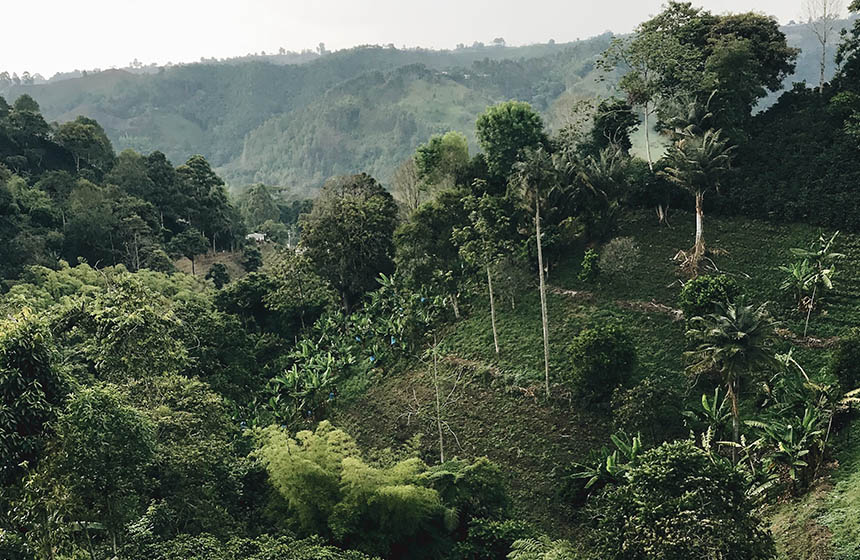Land management strategies from small-scale farmers in the upper amazon
Small-scale farmers in the upper amazon have implemented a diverse array of strategies to combat soil erosion, land degradation, and decreasing fallow periods in order to minimize the effects on marginal farmlands and maximize the forest-soil relationship.
Nature-based Intervention:
In order to address the challenges of farming on marginal lands, small-scale farmers have implement a diverse array of land management and agricultural strategies to minimize their individual risk. In order to manage hill slopes and limit run-off, farmers strategically reforest steep areas and leave forest fragments within steep regions. They also create barriers of plant matter (called shuntos) out of weeds found in the fields in order to slow water flow down the mountain and concentrate nutrients within the growing area. Farmers adapt to shorter fallow periods by encouraging the growth of nitrogen fixing native trees and fast-growing palms to accelerate the creation of secondary forest growth within the fields. Many of the small-scale farmers do not have heavy machinery and instead use fire as a key management tool. However, fire is not used as a single strategy, but rather a highly diverse mix of complete burns, patch burns, and burn piles depending on the crop and environmental conditions. This knowledge was then implemented in land restoration experiments under the farmers guidance, where they recommended reforestation rather than manure as the best way to rehabilitate the land.
Overview of context and outcomes:
Small-scale farmers in the upper amazon regions of Peru live in areas of increasing population density which are also considered biodiversity hotspots. Most of these farmers operate on marginal lands and must cope with soil degradation, deforestation, reduced fallow periods, and soil erosion. Through viewing the forest as the main driver in creating healthy soils it creates an ingrained dedication to positive forest management in order to ensure the greatest positive outcome for the environment and local communities. Learning from these local farmers not only provides key advice on how to limit marginal farmland degradation, but also how to reforest and restore damaged areas.
Case effectiveness on
Climate change
The preservation of small forest areas within agricultural landscapes allows for them to likely sequester more carbon within the landscape.
Farmers implement dynamic and adaptive strategies based upon traditional knowledge in order to prescribe the best management practice in order to maximize yields despite environmental variability.
Ecosystem health
Ecological effect: PositiveThe interventions reportedly increase the recovery rate of the landscape and protect habitat diversity. Small-scale farmers have developed a diverse and prescriptive set of strategies to contextually meet local environmental challenges and ensure soil health. Their deep understanding of the forest-soil complex and use of the forest as a key restorative force within their agricultural lands also centers forest health as a key element of their overall success
Socioeconomic outcomes
As small-scale farmers have transitioned from sustenance farming to producing cash crops, their increased adaptability to localized environmental and soil conditions has reportedly allowed them to find success. While their farming takes place in marginal landscapes, they have been able to create successful economic outcomes with their adaptive management practices.
Governance
These projects are run by the local farmers which control and steward the land they farm. They use their experience working in the area in order to make management decisions.
Finance
The income to run these projects is earned by the framers from the sale of their crops.
Monitoring and evaluation
Research has been conducted on sample plots to evaluate the impacts that these interventions have on soils and crops.
Trade-offs and limitations
No information yet available on tradeoffs.
Intervention type
- Protection
- Restoration
Ecosystem type
- Montane/Alpine
Climate change impacts addressed
- Soil erosion
Instigators
- Community/self driven
- Local NGO or CBO (eg. indigenous)
- Research institutions
Societal challenges
- Climate change adaptation
- Economic and Social development
- Food security
Outcomes
- Food security: Positive
- Water security: Not reported
- Health: Not reported
- Local economics: Positive
- Livelihoods/goods/basic needs: Not reported
- Energy security: Not reported
- Disaster risk reduction: Not reported
- Rights/empowerment/equality: Not reported
- Conflict and security: Positive
- No. developmental outcomes reported: 3
Resources
Read resource 1Literature info
- Peer reviewed



